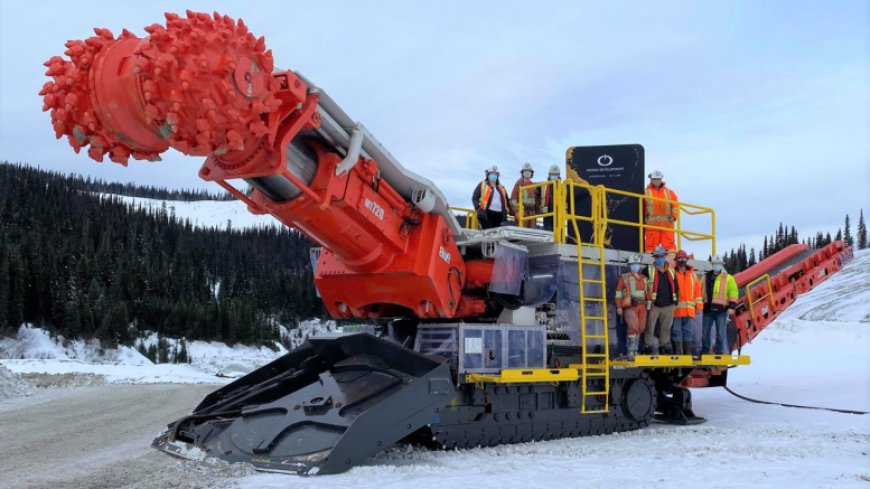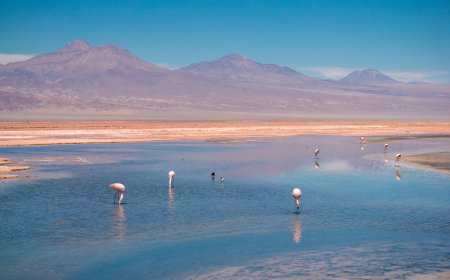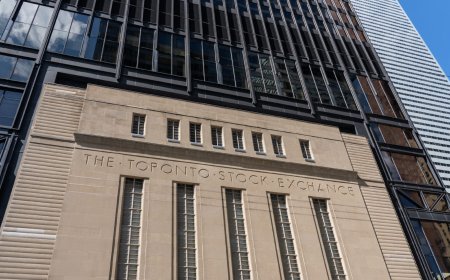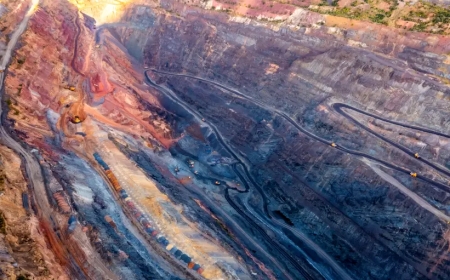Roosen seeks partner for Cariboo gold project ‘beachhead’ in BC
Sean Roosen, part of the team that discovered and developed the Canadian Malartic gold mine, which vies to be Canada’s largest by production, is looking for a corporate partner to help fund his latest project, Cariboo in British Columbia.


The concept might follow how Gold Fields (NYSE: GFI; JSE: GFI) invested for half of Windfall in Quebec this year with Osisko Mining (TSX: OSK), a company with heritage similar to the Roosen-led Osisko Development (TSXV: ODV; NYSE: ODV). Australian and South American miners who want a foothold in Canada might lead the candidates for partner, Roosen said in an interview with The Northern Miner from London in December.

The CEO says he’s already been discussing options with potential parties for more than six months in a tough funding market despite the price of gold hitting all-time highs this week. The partner would help raise the forecast $588 million to build the underground Cariboo mine 700 km north of Vancouver. Osisko is targeting an operating permit by mid-next year followed by less than two years of construction. The project is part of the company’s longer-term plan to develop the legacy of brownfield sites around Cariboo.
“By getting this beachhead in there, the power and the mill, this becomes a central processing facility for many more mines to be developed in the open,” Roosen said. “We like to find these big systems, bring new science, bring capital intensity.”
Cariboo is expected to produce about 1.9 million oz. gold over a dozen-year mine life. It has an after-tax net present value of $502 million at a 5% discount rate and a 21% internal rate of return at a US$1,700 per oz. gold price, according to a feasibility study released early this year. B.C. granted environmental approval in October. The larger area features two parallel prospective trends totalling 83 km.
19th-century site
Osisko Gold Royalties (TSX: OR; NYSE: OR) – another of the post-Malartic companies – acquired Cariboo from Barkerville Gold Mines in 2019 then spun it out to Osisko Development when it was created in 2021. The royalty company still holds about 40% of Osisko Development and a 5% net smelter return on Cariboo if the mine is built on the site dating from the 1850s.
Roosen wasn’t satisfied with the project early on. Osisko Gold Royalties bought 19.9% of Barkerville in 2015 and within two years worked with Barkerville to slash its more than 4-million-oz. resource estimate to less than 100,000 ounces. Then they began drilling 750,000 metres which now shows 5.3 million oz. gold total across all categories.
“It falls somewhere between incompetence and just lack of execution,” Roosen said. “Back in the day, expert dollars were hard and they were bootstrapping these projects. We’ve seen this a lot of places where we go in and then we have to scrap the data set and drill from scratch to meet modern standards.”
Cariboo has probable reserves of 16.7 million tonnes grading 3.8 grams for 2 million oz. gold. It has 1.6 million measured and indicated oz. and 1.7 inferred oz., the study shows.
The feasibility study disappointed some analysts. Cariboo would have to raise $300 million before it could start the mine’s second development stage because it wouldn’t generate enough income, industry blogger Mark Turner wrote on his IKN site. The project has a later proposed start-up date and lower grades than anticipated, BMO Capital Markets mining analyst Jackie Przybylowski said early this year. Stage one would have an average grade of 4.4 grams gold per tonne; stage two estimates 3.7 grams, according to the feasibility study.
Resource nationalism
The funding choice, whether a partner and combinations of equity and debt, will depend on the market and potential dilution for shareholders, the CEO said. On the one hand, the price of gold soared to a record intraday high of US$2,100 per oz. on Dec. 3 and Canada remains a top-tier jurisdiction. Geopolitics stymies Russia and China, and resource nationalism is limiting the appeal of countries such as Mexico, Panama and others in Latin America.
On the other hand, funding remains tough when large institutions and funds follow new environmental, social and governance rules limiting mining investments, and high inflation squeezes exploration companies.
“People aren’t translating the fact that decarbonization is a mining-intensive activity, so that disconnect is surprising to me,” Roosen said. “We’ve seen a hyper increase in input costs, and in Canada we’re starting to see the drastic effects of the carbon credits, especially on the exploration side when fuels and aviation are required for remote sites. We’re in the land of unintended consequences.”
Osisko wants to go almost all electric at Cariboo after securing 40 megawatts from B.C. Hydro at 6-7¢ per kilowatt hour, he said. It plans to use an autonomous tunnelling machine, not often used in mining, to take advantage of soft sandstone host rock and reduce the use of explosives.
Cariboo plans to use X-Ray fluorescence and optical sorting to cut half the ore it mines from being processed to reduce energy costs, tailings and surface water impacted by tailings, Roosen said.
Ramp access
The mill would process 4,900 tonnes of ore a day, just under a limit requiring federal review, for 220,000 oz. gold per year. The company has already spent $235 million on project infrastructure including the start of a ramp to access the orebody that runs about 350 metres down from surface and may go 1.5 km deep.
Osisko also aims to revitalize the central B.C. historical mining area around Cariboo with plans for waterparks, outdoor art, sports fields and $20 million already spent on remediating old tailings ponds with the government. The company funds a local theatre troupe and it’s bringing triple-phase electricity to the town of Wells that will help industry and ski hills. In partnership with First Nations, it’s sponsoring a roe release facility to increase the salmon population, and a caribou calving ground to help expand herds.
“The Osisko motto is we leave everything better than we find it, not as good as, but better than,” Roosen said. “We’re creating infrastructure that everybody’s going to use.”



















